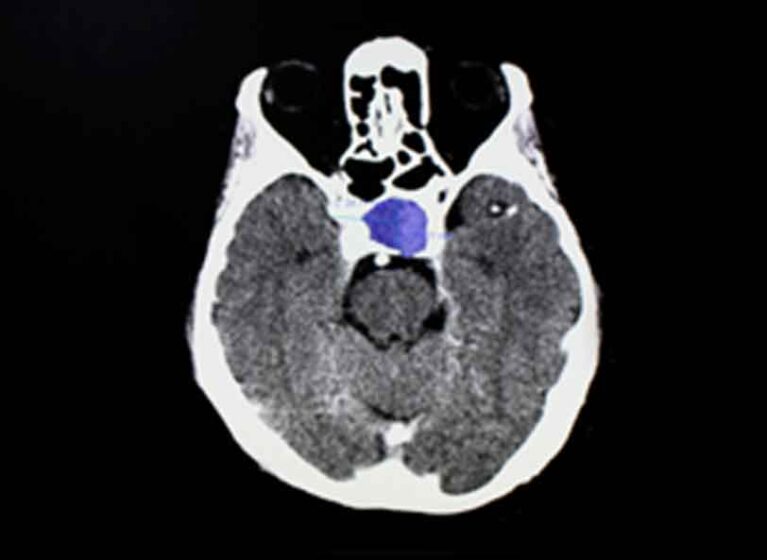
The UVA Health Pituitary Tumor Program is one of the leading programs of its kind due to the breadth and depth of its experience and expertise. From the start, the program has focused on making the patient experience as seamless and easy as possible. It's a story of pioneers who established a model of care that allowed for impressive innovation and growth.
Same-Day, Multidisciplinary Care From the Start
UVA Health endocrinologists Mary Lee Vance, MD, and Michael O. Thorner, MBBS, along with neurosurgeon Edward R. Laws, MD, founded the multidisciplinary Pituitary Tumor Program in 1992.
"Then and now, at most programs, the patient sees an endocrinologist one day, then a neurosurgeon another day or at a different location," Vance says. "We wanted to give patients and their families a total view of what the patient has and what needed to be done from both the endocrine and the surgical standpoints — all on the same day."
Before and after Laws' 2006 departure, the program recruited accomplished neurosurgeons such as John A. Jane Jr., MD, and the late Edward H. Oldfield, MD. Now entering its fourth decade, it remains ahead of its time.
Optimizing Patient Convenience & Quality of Care
The Pituitary Tumor Program mostly sees patients with pituitary tumors but also treats craniopharyngiomas, meningiomas, Rathke's cleft cysts, and other tumors occurring near the pituitary gland. The interdisciplinary team includes endocrinologists, neurosurgeons, ENT specialists, neuropathologists, neuro-ophthalmologists, neuro-oncologists, neuroradiologists, interventional radiologists, radiation oncologists, nurses, and therapists.
Prior to a patient's first visit, an endocrinologist and neurosurgeon review the medical history and records and discuss a prospective treatment plan. If appropriate, additional testing is prearranged for the day of the visit.
"The endocrinologist and neurosurgeon are in the same room with the patient and the family," Vance says. "We're all on the same page about the endocrine/hormonal aspects and the surgical aspects, so the patient and family can ask questions about all aspects of the pituitary problem. You have to get both endocrine and surgical input, because they're each 50% of patient management."
At this and each subsequent visit, the patient receives this kind of simultaneous endocrine/neurosurgery consultation. As needed, the patient can also have:
- Neuro-ophthalmologic assessment
- Gamma Knife radiosurgery evaluation
- Sophisticated endocrine testing
- Same-day MRI
"We have so many of the key physicians and imaging modalities all in one place, which gives us the ability to see patients the same day," Jane says. "This also makes it more efficient for patients who come to be evaluated, particularly if they're traveling from a distance. That's important, because we draw patients basically from east of the Mississippi River."
"I don't know of any other place where at the same visit, in the same space, the neurosurgeon and endocrinologist are seeing patients together on a weekly basis," adds endocrinologist Gregory K. Hong, MD.
High-Volume Medical & Surgical Expertise
UVA Health has been home to a number of advances in pituitary care over the past several decades. Vance and Thorner led the development of new medical treatments for pituitary tumors and the refinement of replacement therapy for pituitary deficiency. Meanwhile, UVA Health neurosurgeons pioneered techniques for removing pituitary tumors, including the development of transsphenoidal and endoscopic approaches to the pituitary region.
The Pituitary Tumor Program remains committed to pushing forward the field of pituitary care. Among the busiest pituitary centers in the United States, UVA Health physicians have conducted thousands of transsphenoidal pituitary operations.
"The literature shows that the best outcomes are achieved at the centers with the highest volume, and we're definitely a high-volume center when it comes to transsphenoidal surgeries," Hong says.
What Makes the Pituitary Tumor Program Thrive
For each case, the team also considers medical therapies, radiotherapy, and Gamma Knife radiosurgery. Since 1989, the Lars Leksell Center for Gamma Surgery at UVA Health has treated more than 10,000 patients, including over 600 patients with pituitary problems.
Jane and his colleagues believe the Pituitary Tumor Program's multidisciplinary approach to pituitary care will help it continue to thrive.
"This really was a first-of-its-kind concept; a multidisciplinary clinic was not in vogue back in the early '90s," Jane says. "The idea was, what would be better than for patients to be evaluated on same day in the same clinic by a team of experts? And that has proven to be true."